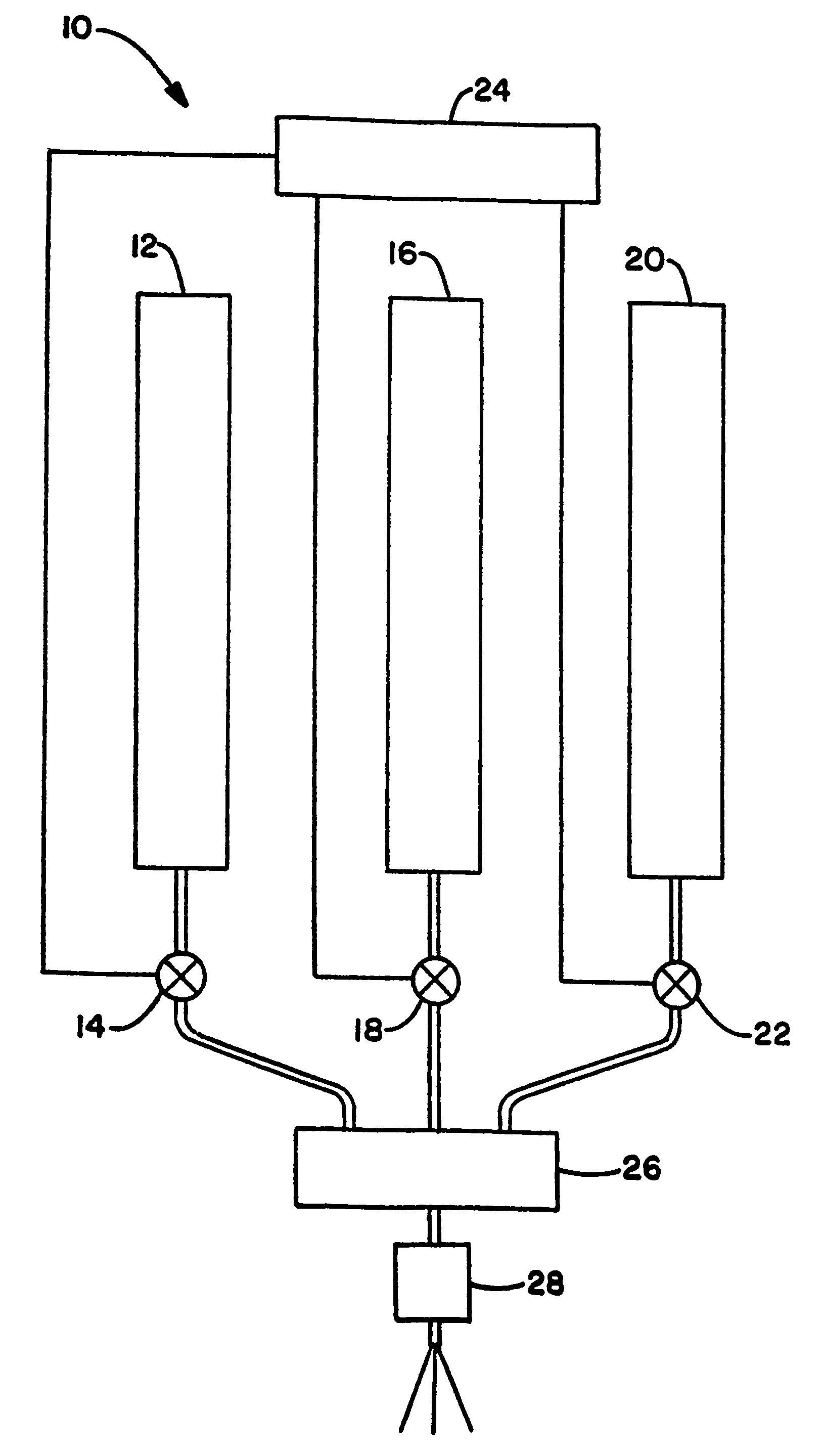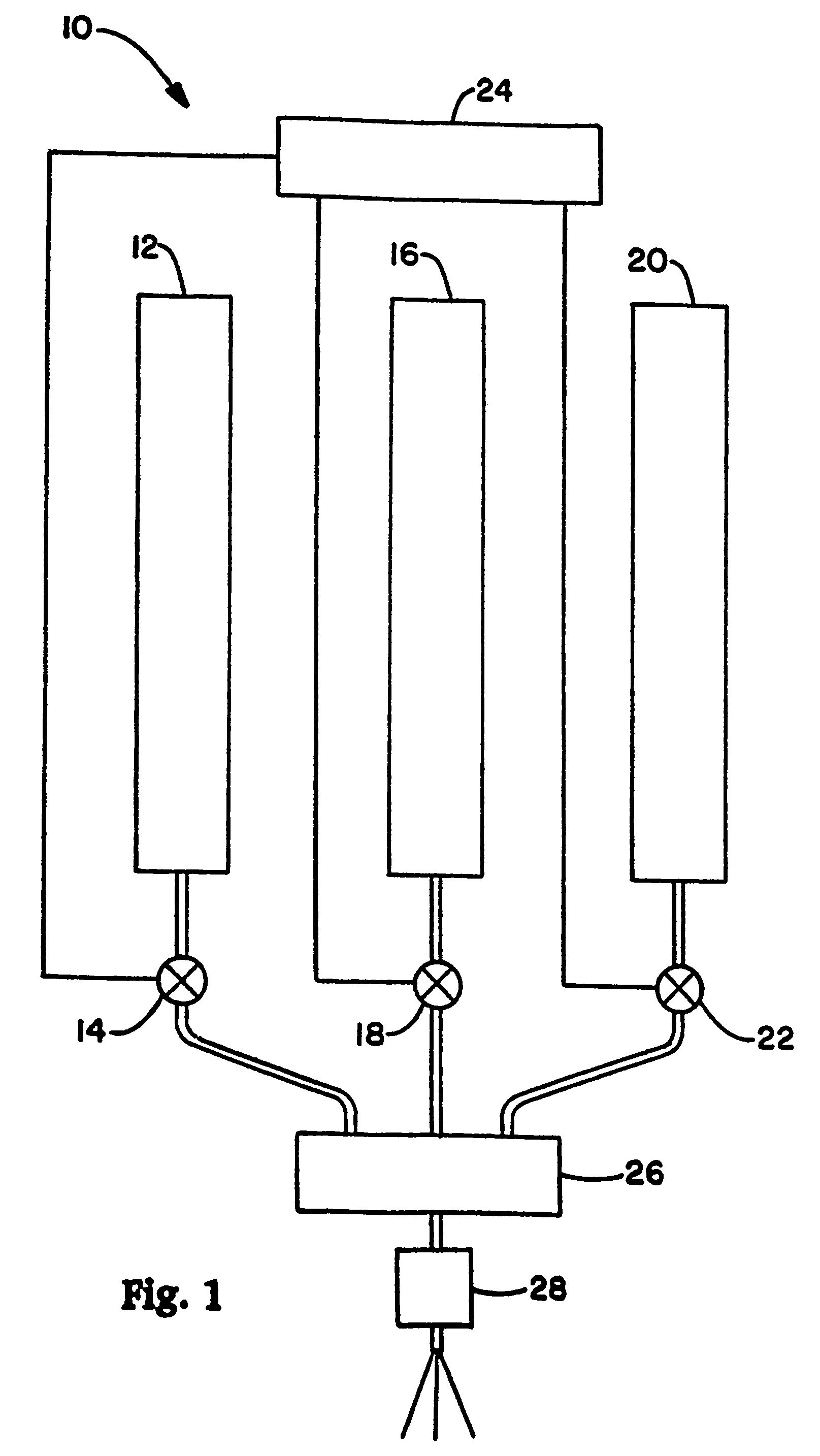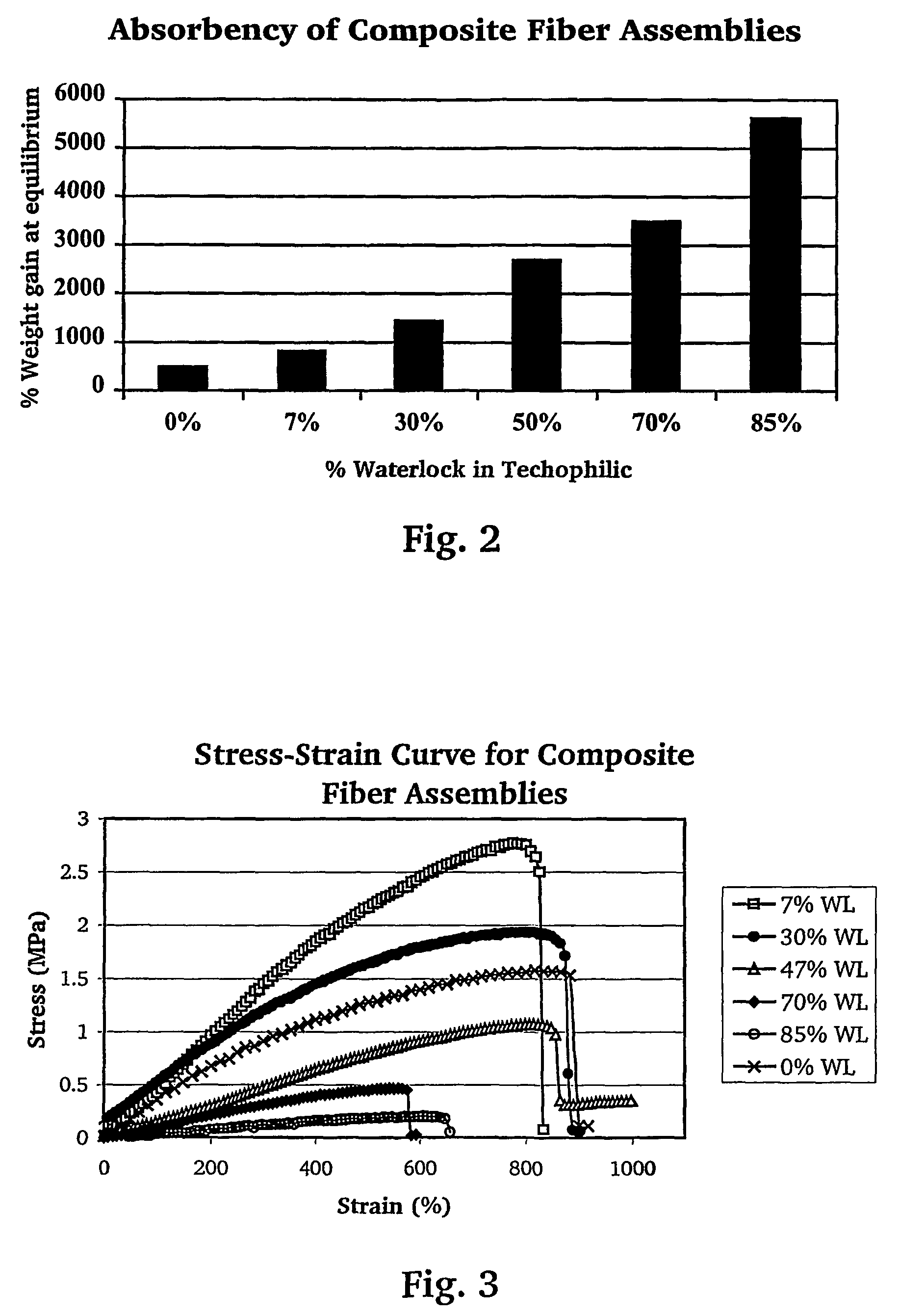Non-woven fiber assemblies
a technology of nanofibers and fibers, applied in the direction of fiber mixing, weaving, bandages, etc., can solve the problems of affecting the integrity of the article, interfering with the absorption of liquid by the wettable layer, and not providing a medical dressing that adheres to undamaged skin
- Summary
- Abstract
- Description
- Claims
- Application Information
AI Technical Summary
Benefits of technology
Problems solved by technology
Method used
Image
Examples
Embodiment Construction
[0024]As mentioned above, the present invention provides a non-woven fiber assembly comprising at least one fiber and containing an adhesive component, an elastomeric component, and a hydrophilic component. The at least one fiber may contain a series of segments such as a segment that is primarily or even totally an adhesive component, a segment that is primarily or totally an elastomeric component, and a segment that is primarily or totally a hydrophilic component. When the at least one fiber has such an arrangement of components, the different segments may be arranged in any of a number of orders, depending on the needs of a particular application. It is envisioned that a particularly useful arrangement would include a segment that is at least primarily an adhesive component located adjacent to a segment that is at least primarily a hydrophilic component, which is, in turn, located adjacent to segment that is at least primarily an elastomeric component. The composite fiber may als...
PUM
| Property | Measurement | Unit |
|---|---|---|
| diameter | aaaaa | aaaaa |
| diameter | aaaaa | aaaaa |
| diameter | aaaaa | aaaaa |
Abstract
Description
Claims
Application Information
 Login to View More
Login to View More - R&D
- Intellectual Property
- Life Sciences
- Materials
- Tech Scout
- Unparalleled Data Quality
- Higher Quality Content
- 60% Fewer Hallucinations
Browse by: Latest US Patents, China's latest patents, Technical Efficacy Thesaurus, Application Domain, Technology Topic, Popular Technical Reports.
© 2025 PatSnap. All rights reserved.Legal|Privacy policy|Modern Slavery Act Transparency Statement|Sitemap|About US| Contact US: help@patsnap.com



